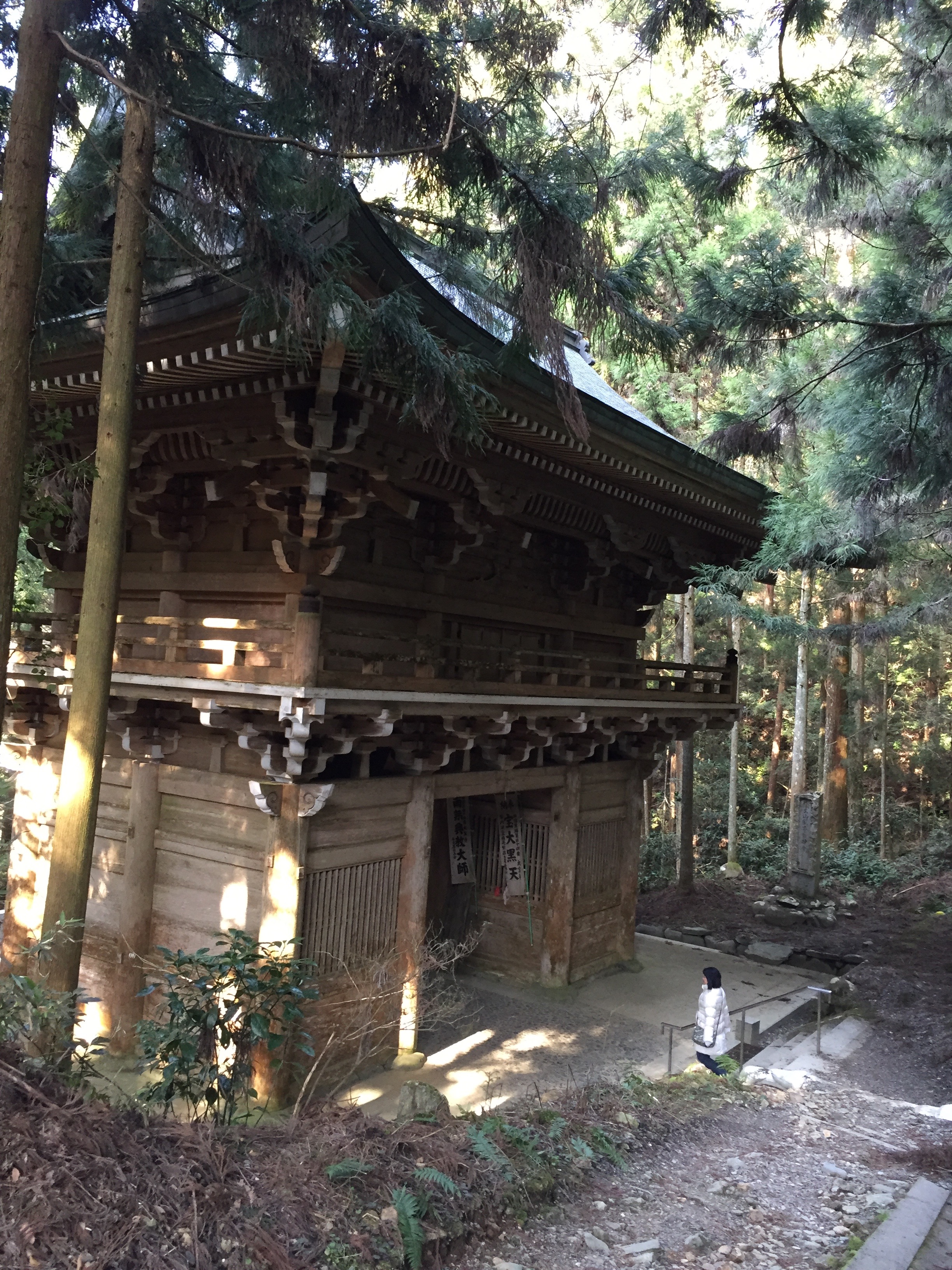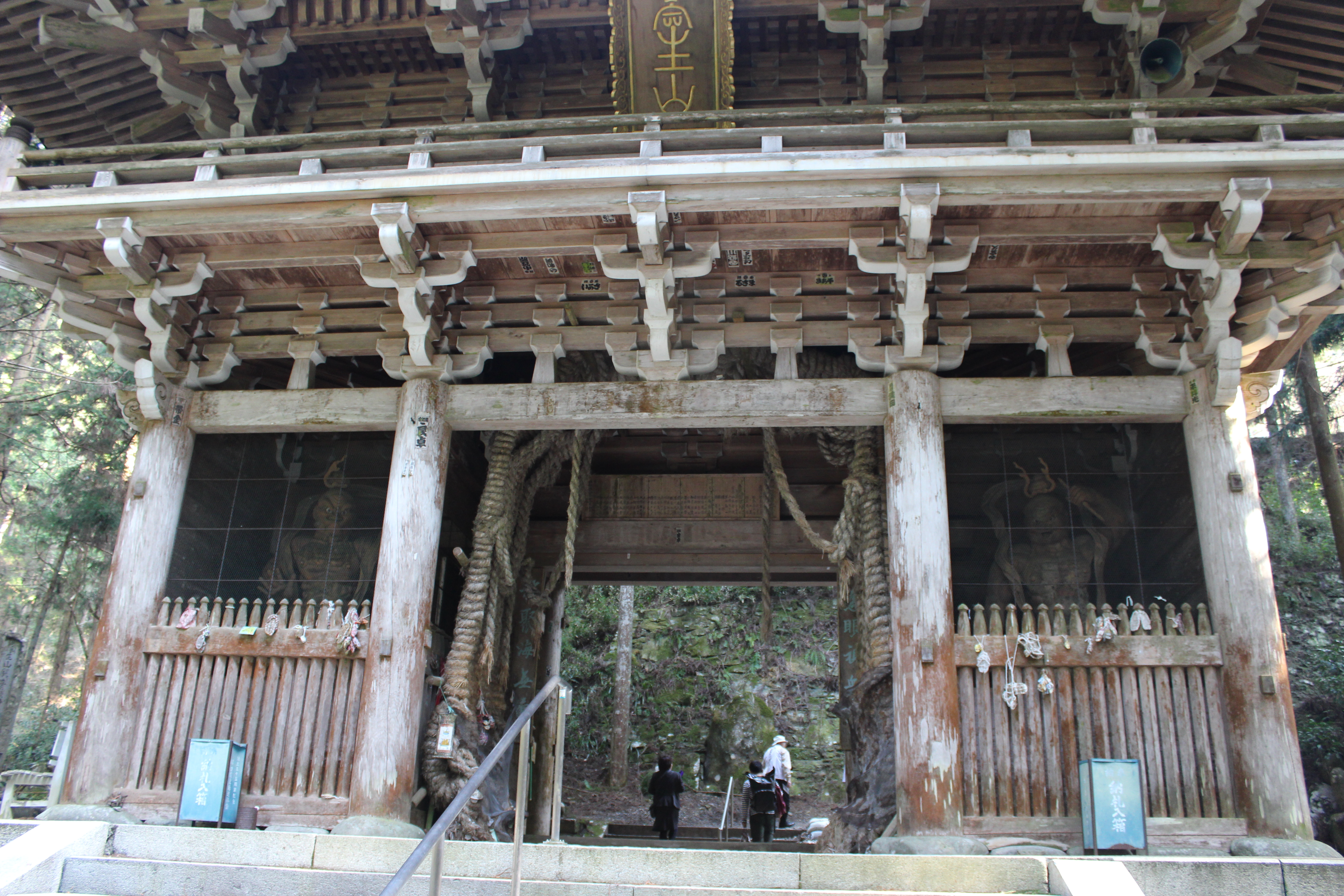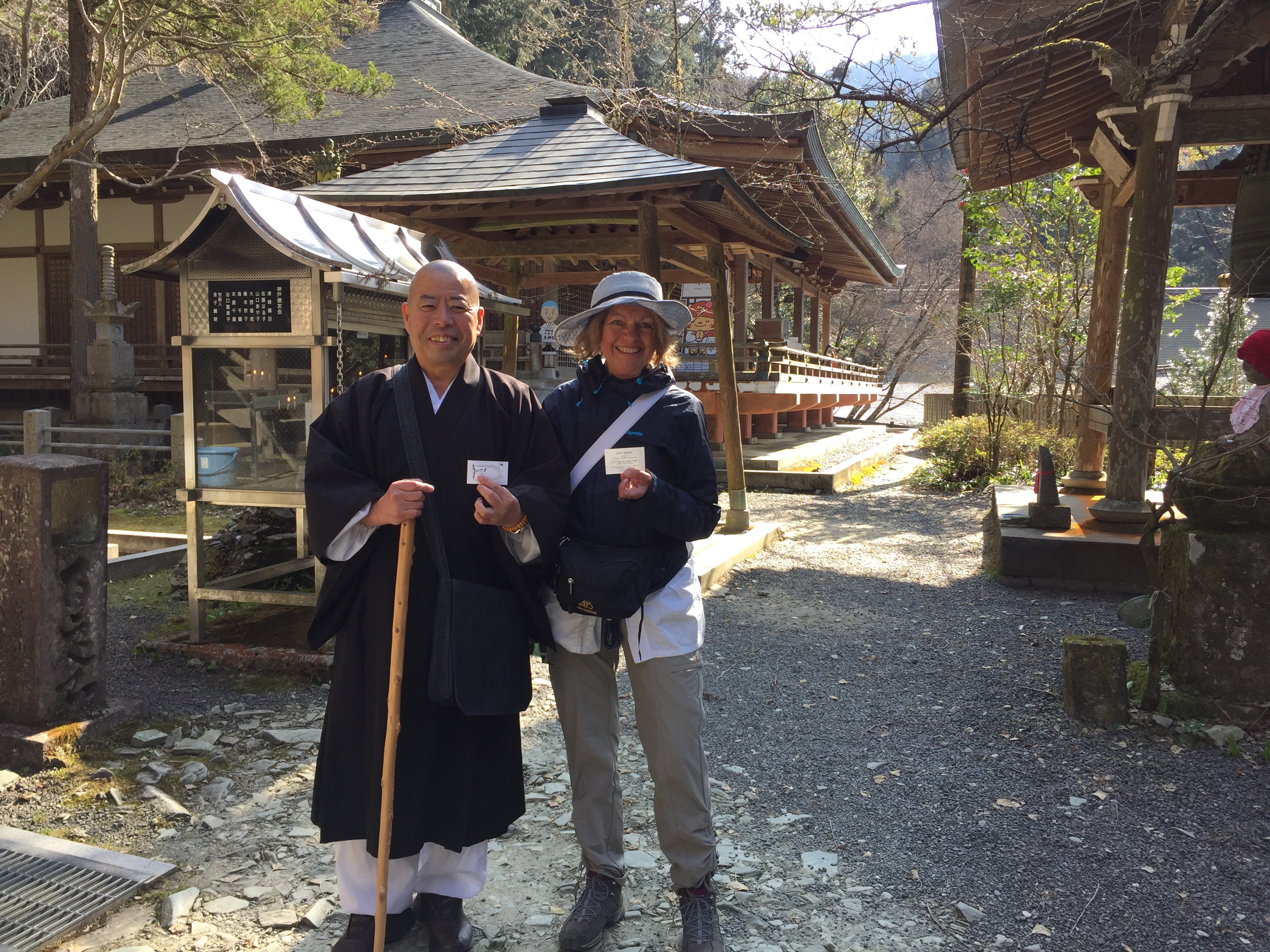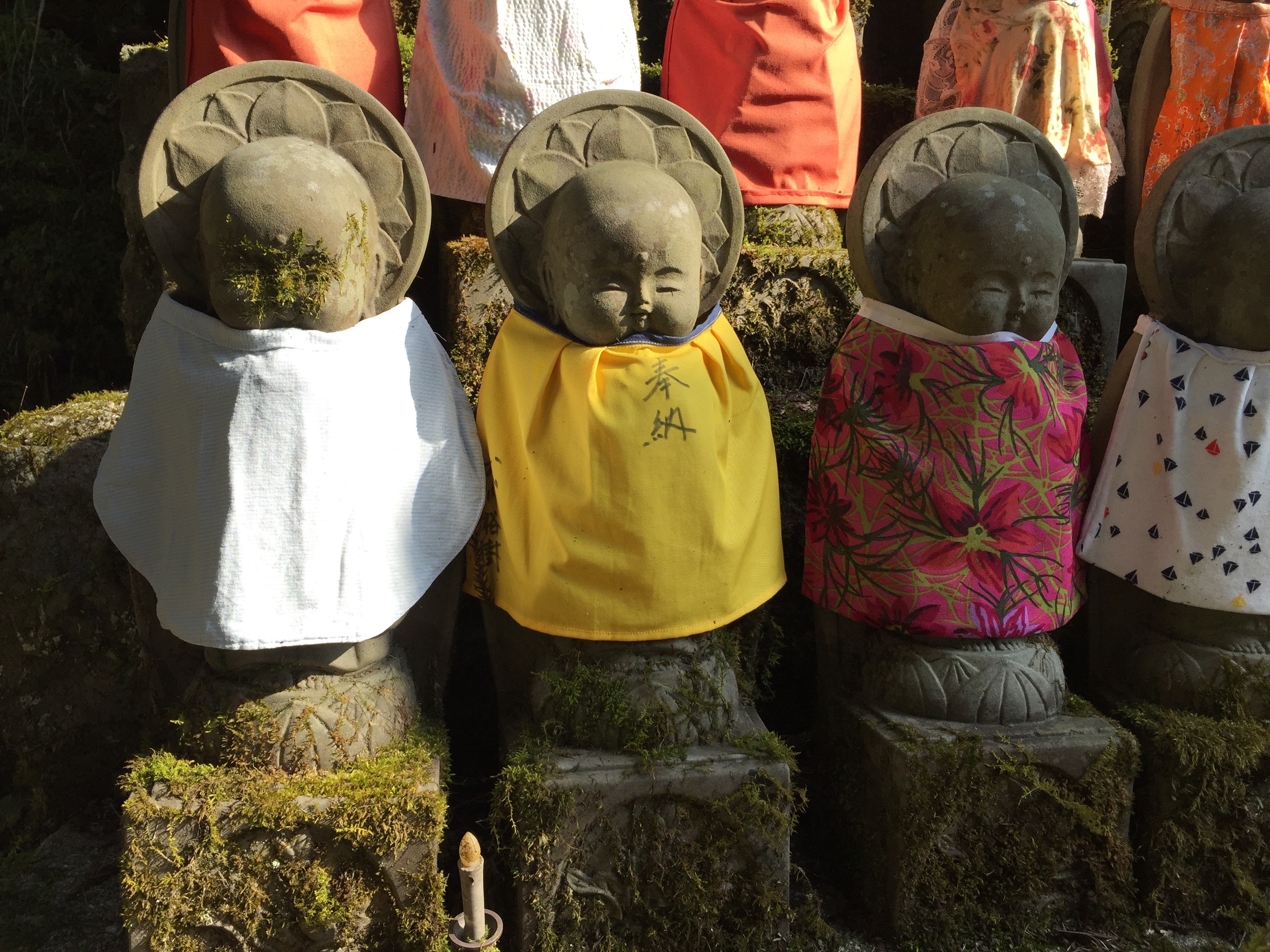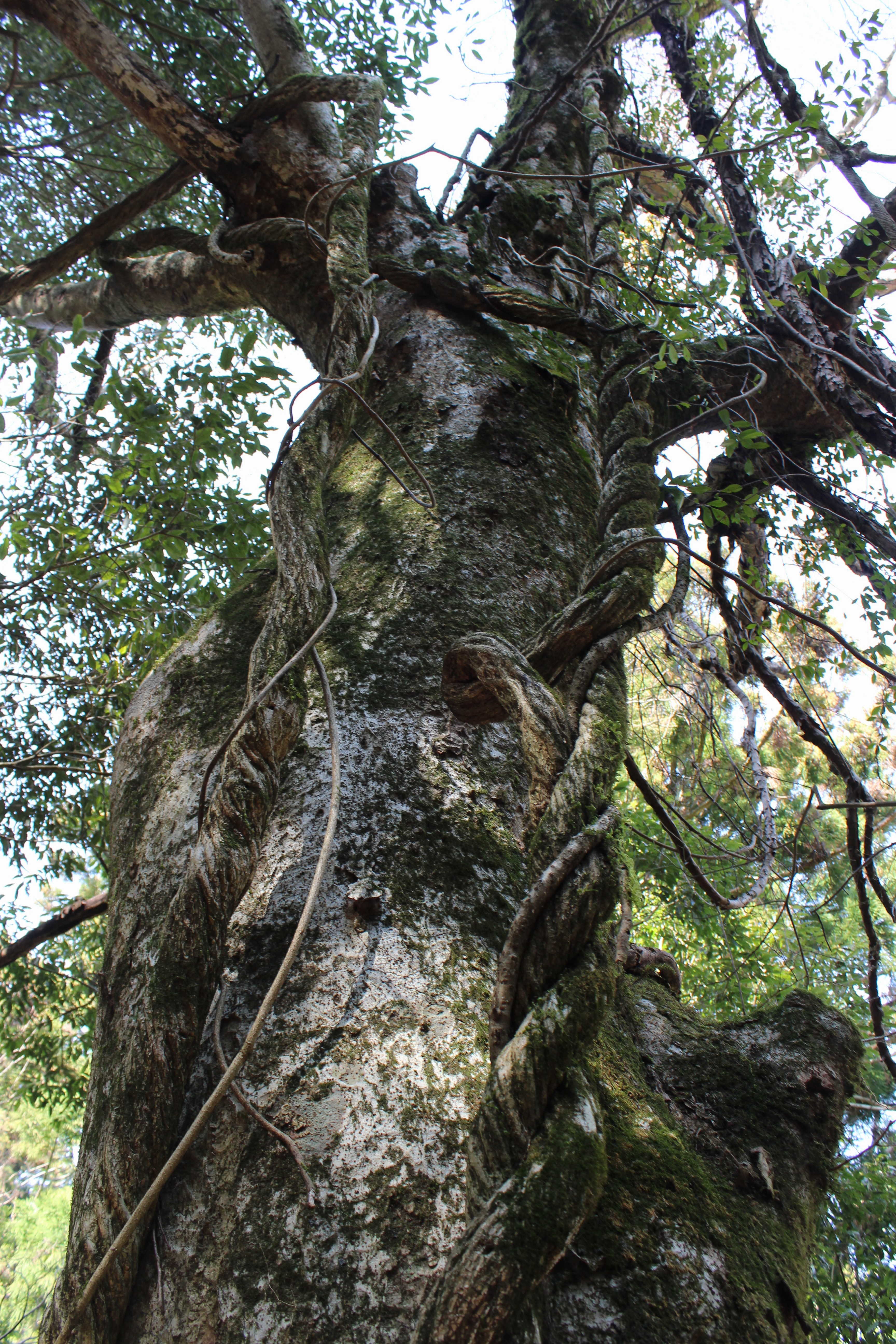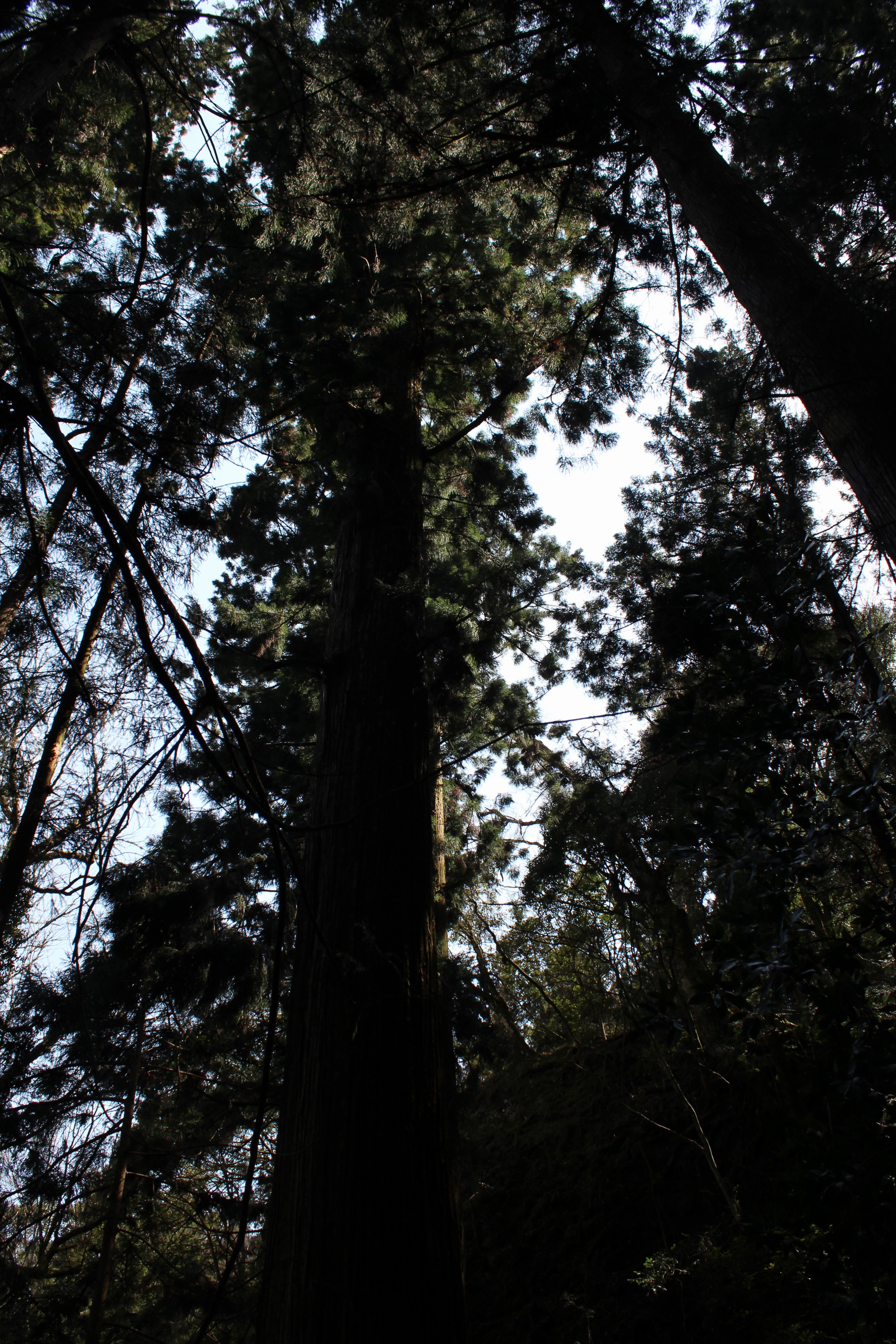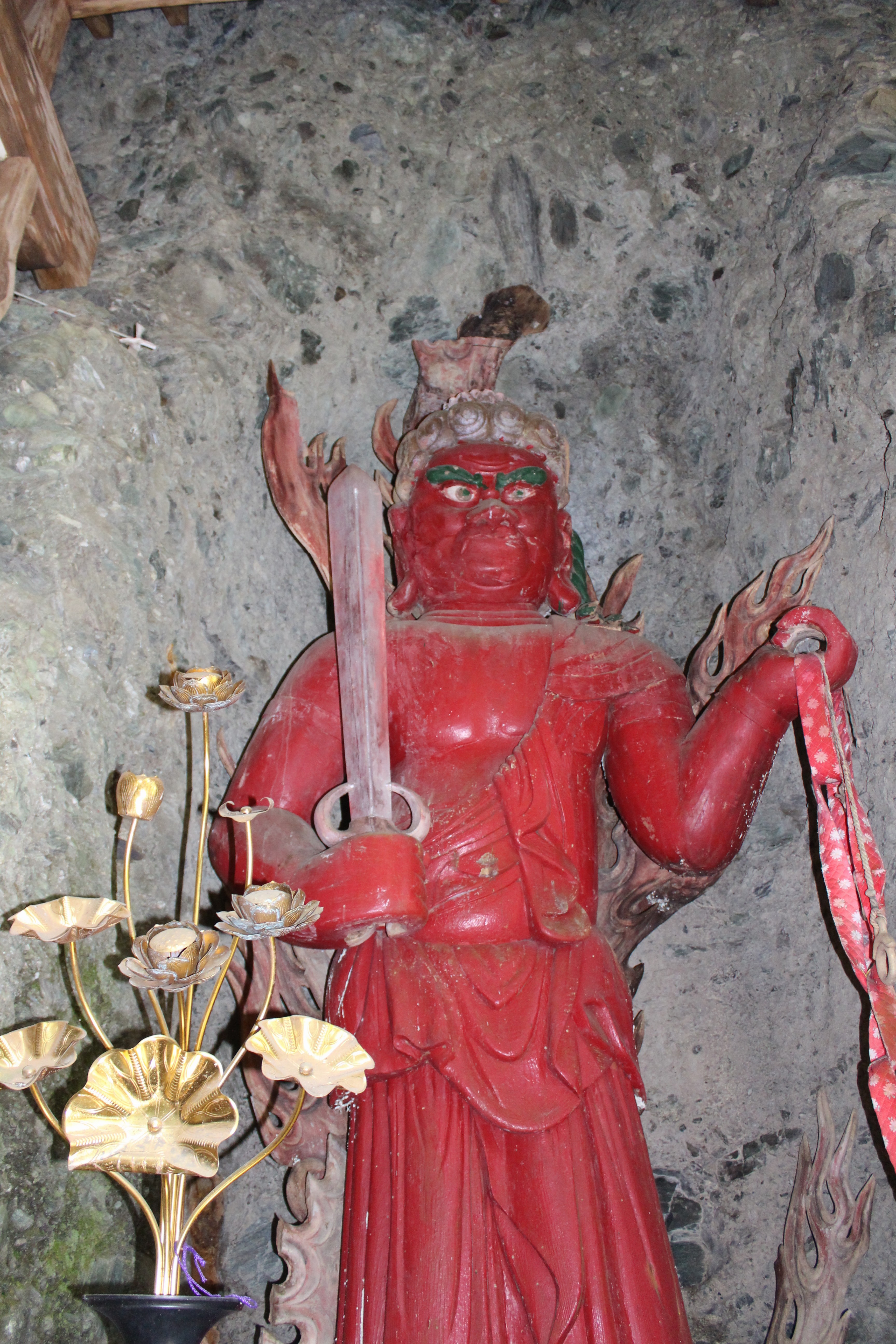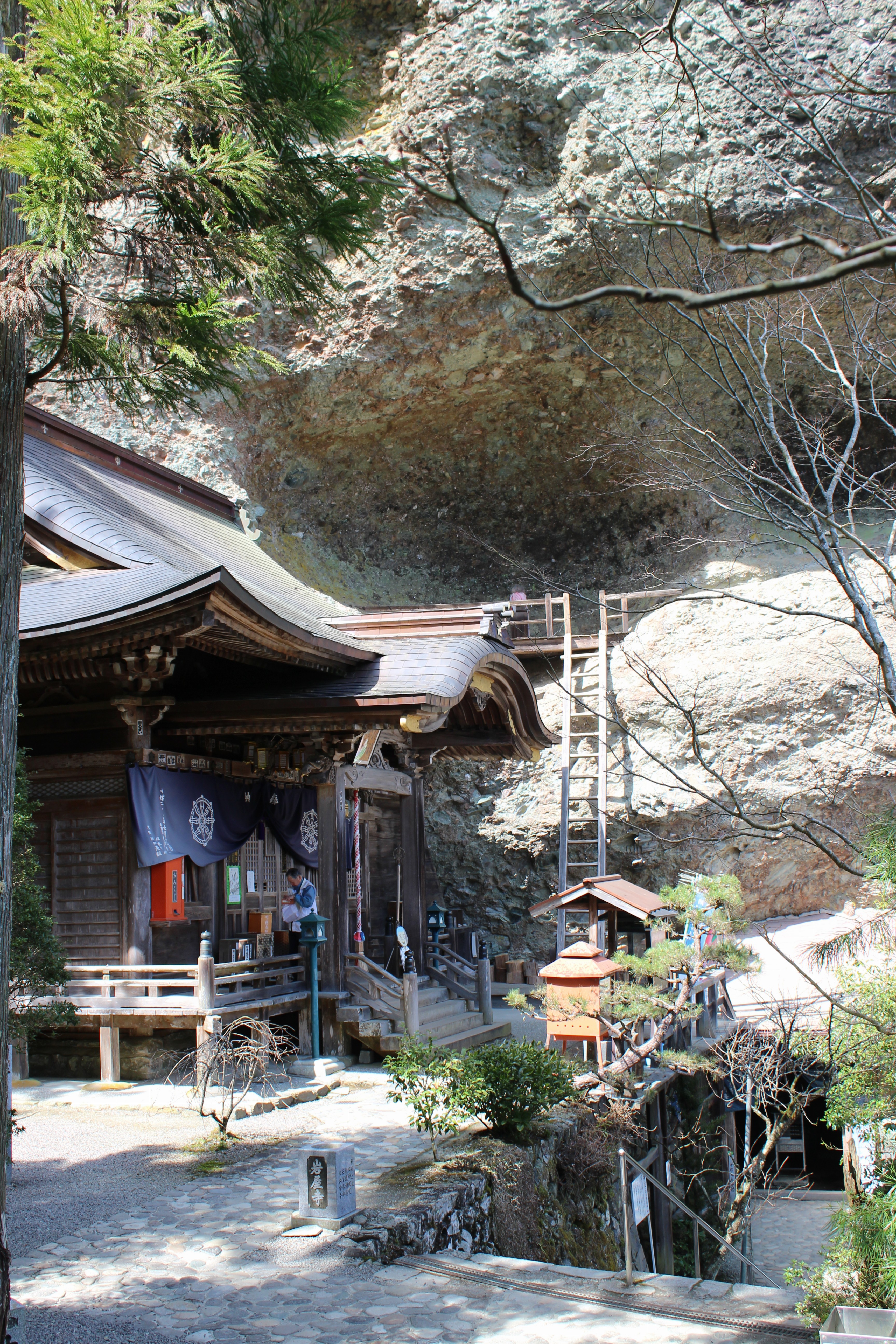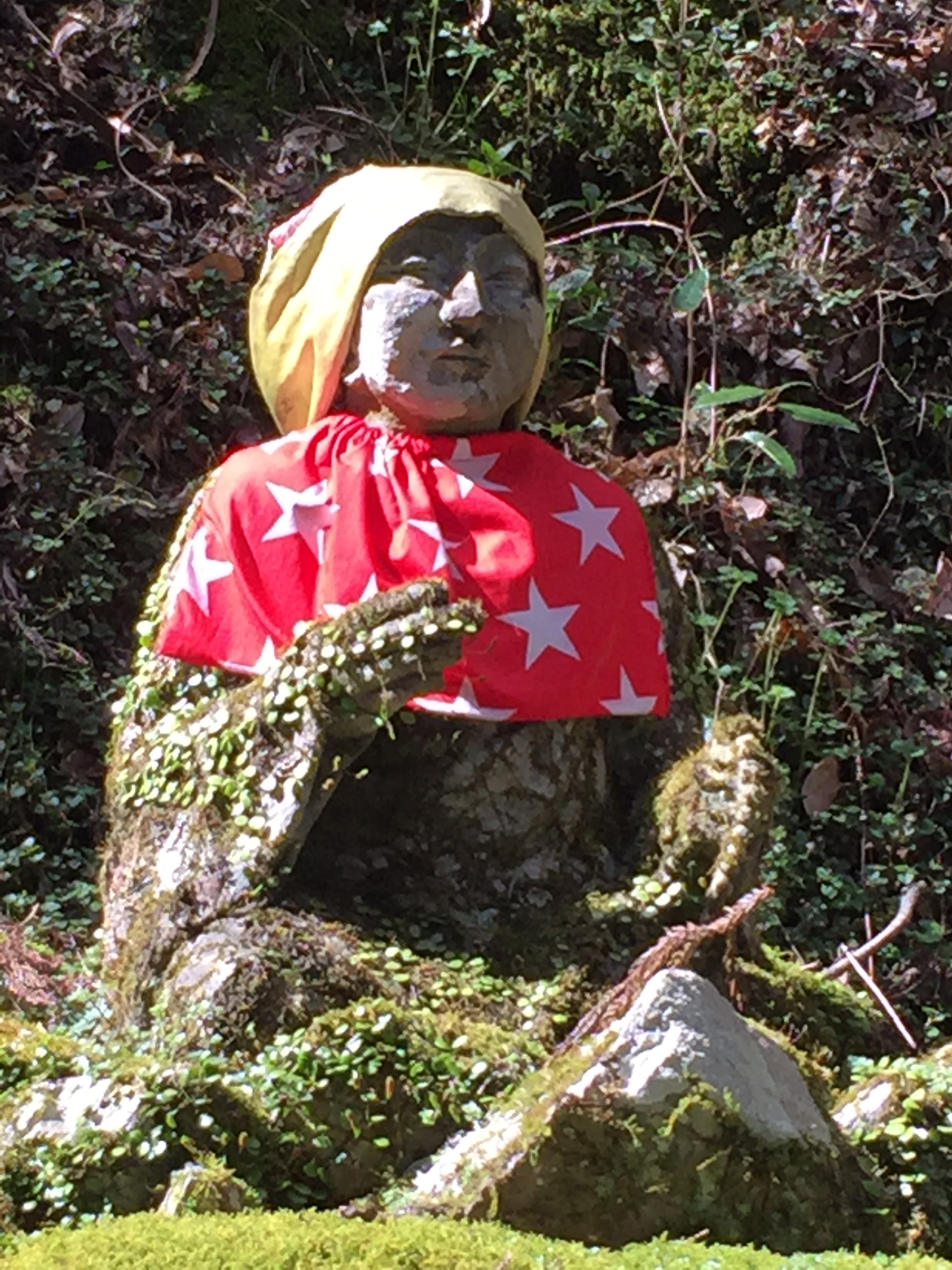What’s the Rush? Two Mountain Temples (temples 44,45)
I was rushing up the mountain road to Daihōji (temple 44), passing a group of bus
Ohenros, when the leader of the group (a Shingon priest) was stopping me and said,
“What’s the rush?” Immediately, it brought me back to the presence. I was very
thankful for his words.
Bus Ohenros
Entrance gate to Daihōji
Every entrance gate has a wooden threshold indicating the start of a sacred area.
It is important to cross over the threshold without touching it.
Later on, I met the priest (leader of the group) again. We exchanged cards.
Shingon priest from Koyasan and I
Statue of Kannon Bosatsu with the Hondō in the background
Row of Jizōs
It was a 10 km long mountain path to Iwayaji, temple 45. Legend says that a woman,
who was a hermit with magical powers to fly, was giving the location to Kūkai who
founded this temple. The temple is called “temple of the cave” and is surrounded by
nearly vertical cliffs and deep gorges. On the way to this temple, in the middle of the
woods, I passed a sacred area of the Shintō religion.
Although the path of the Shintō shrine was not the same as to Iwayaji, I followed it.
It brought me to fantastic nature sights, ancient trees, steep mountain paths and
narrow gorges. Unfortunately, I did not have enough time to discover it all.
Ancient, moss covered tree with vines woven around each other
I made this photo by climbing up a steep path.
Look to the top of powerful cedar trees
The red statue is probably Fudōmyōō (Acala), a Shingon God and protector of mountain spirits
Fudō means “not moving.” He is the unmovable wisdom king who holds the evil-
subduing sword in his right hand and a rope in his left hand, which he uses to bind
and capture evil.
The Hondō of Iwayaji (temple 45) with vertical cliffs in the background
Moss covered Jizō with green leaves crawling up his right hand


